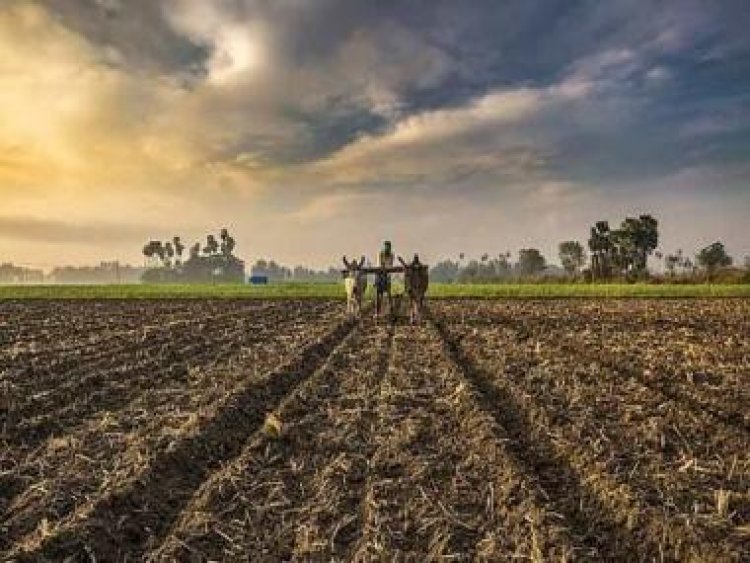Smartphone penetration empowers farmers with splash of technology
Smartphone penetration empowers farmers with splash of technology

Smartphones have made the dissemination of information a child’s play. It is a simple device that brings the world right to your palms. A few taps on the screen, and one can access all the relevant data. In an era driven by technology, information and insights, smartphone penetration happened rapidly across sectors. Agriculture is no stranger to this revolution. A study suggests that the adoption of modern technology increases the output per worker by 50 times.
Until 2003, 60 per cent of the Indian farmers complained about having no access to information or modern technology, leading to unforeseen losses. Since then, both the Central and state governments have recognised the positive impact smartphones have on the productivity of the nation’s primary sector. In light of this, the Shared Mobile Infrastructure Programme (SMIP) was launched to build 7,000 mobile phone towers to boost connectivity in rural areas. Today, several mobile-based aids have been provided to farmers, thereby empowering them. Let’s dive deeper to understand how smartphones are crucial for agricultural development -
Improved farm management
Crop cultivation is a multi-dimensional activity. It is only when all the factors like sowing, irrigation, spraying, and harvesting come together in proper synchronisation, you can expect a bumper outcome. Timing is critical too. Smartphones allow farmers to benefit from technologies like Big Data, predictive analytics, Artificial Intelligence (AI) and Machine Learning (ML).
Apps like Kisan Suivdha and Krishi Mitr have been specially designed to provide information regarding fertilizers, subsidies, new crop varieties, current weather, predictions for the upcoming days as well as market prices of commodities in nearby mandis, among other things. These apps have the primary objective of providing farmers with an extremely user-friendly interface. Having access to such advanced information allows cultivators to make informed decisions, curb losses, better utilize resources, and maximize their earnings.
Automated exchange of information
Traditionally, farmers depended on local channels to exchange information. For instance, if there was a pest outbreak, they would discuss it among themselves and try figuring out solutions via the trial and error method. Though with experience, farmers were able to sustain for several years, the losses were heartbreaking. The arrival of technology has proven to be a game-changer. Many futuristic apps can be downloaded for free on one’s smartphone. In case, a farmer spots any abnormality in the crops, he can simply take a picture and upload it on the app. A team of experts immediately reviews the images, and within minutes an assured solution is sent back to the farmer. Smartphones have ensured that irrespective of the problem, farmers can find a solution timely. They even allow them to use platforms like YouTube and Google, wherein cultivators can learn from the numerous free farm management tutorials available.
Further, the automation of the information exchange process has made the lives of farmers easier beyond the field too. Several state governments like the one ruling in Karnataka has introduced a Farmer Registration and Unified beneficiary Information System (FRUITS). It is a software designed to hold all the details of registered farmers in a centralized database. This way, farmers do not have to submit and re-submit the same documents in different departments to get their work done. All the authorised government representatives have access to this information, allowing them to provide speedy resolutions to all farm-related issues.
Reminders, real-time price discovery and much more
To efficiently manage a farm, there are innumerable things that need to be taken care of. For instance - if pesticides and manuring are required, there are certain periods and growth stages during which it should be done. Any discrepancy or time gap might diminish the quality and quantity of the yield. Smartphones help farmers in averting such instances. They can set up alarms and reminders that notify them well in advance about the spraying and irrigation cycles. For those with cattle on their farms, smartphones provide the opportunity to incorporate geo-fencing. This technique notifies farmers if the animals wander beyond the set digital perimeter, allowing them to exercise control remotely.
In addition, having a smartphone enables farmers to access the real-time rates running in the markets. These prices are determined by predictive tools based on current and past purchase behaviour as well as market demand. Farmers can compare the rates in different mandis and sell only in those where they get the best rates for their produce. The central government has added to this trend by introducing a pan-India online trading portal called National Agriculture Market (eNAM). It brings together the existing APMC mandis, creating a large-scale market for agricultural produce. This initiative provides farmers with an expanded platform to sell their commodities.
One smartphone can automate most of your processes. Many new-age startups are also working towards building apps that make the lives of farmers hassle-free. Some disruptive apps launched by these organizations include ‘harvest the farm calendar’, giving farmers all the insights required for end-to-end cultivation. Furthermore, data being such an important factor, the government of Maharashtra, in collaboration with Tata Trust, recently developed Peek Pahani, a very innovative and inclusive mobile app for crop surveys. In a world driven by technological solutions, it is an economical investment that offers myriad beneficial returns.
What's Your Reaction?

























































